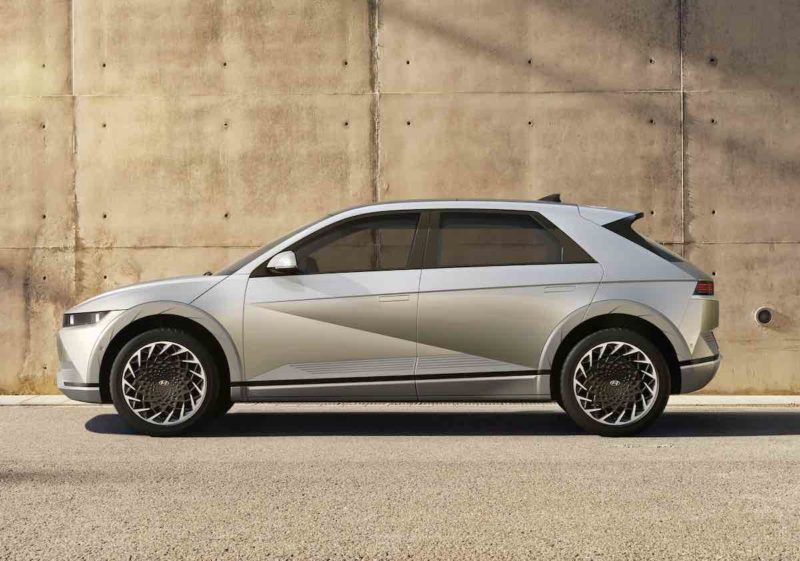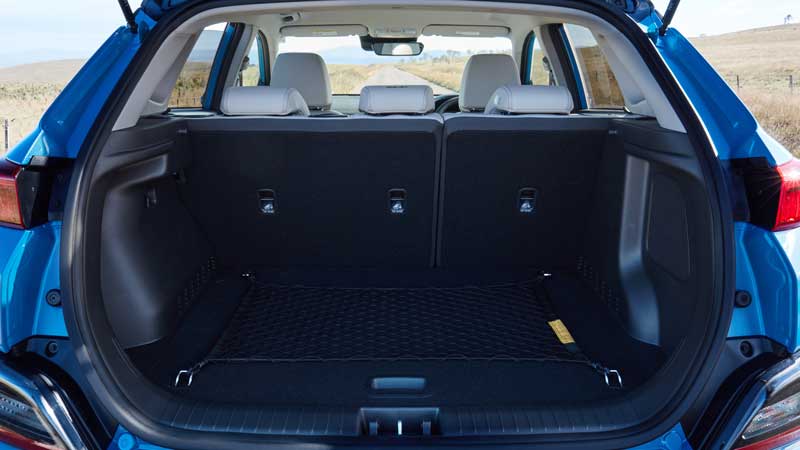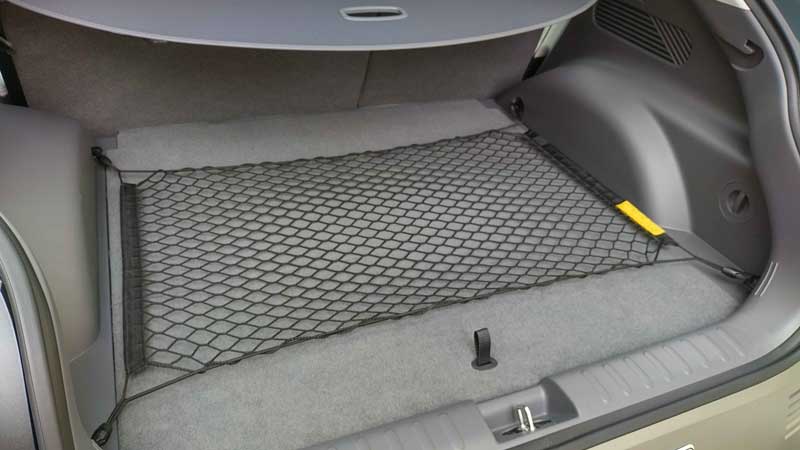I often now get asked by Kona Electric owners: “What do you think – is it worth upgrading to the Ioniq 5?”
Given I’ve been driving a Kona Electric for nearly two and a half years, and have recently spent over a week driving an Ioniq 5 around (courtesy of Hyundai) – I feel handily placed to at least offer some insights into answering that question.
First-up, the Kona’s biggest ‘failing’ is its relatively small seats-up boot volume. This comes from the combination of it being a moderately small car (at 4200mm) and based on an ICE (internal combustion engine) platform.
This means there is plenty of waste space in the electric version as the interior still allows space for where the engine, fuel system and spare wheel used to be.
On the other hand, the Ioniq 5 is built on Hyundai’s new all-electric e-GMP platform. This means far less wasted space – and the designers definitely took this to heart when creating the interior layout.
With its panoramic glass roof, open, flat floor front seating area and LCD panel dash layout, the Ioniq 5 has room inside to swing the proverbial cat, and in general feels far more spacious than ICE cars of the same external dimensions.
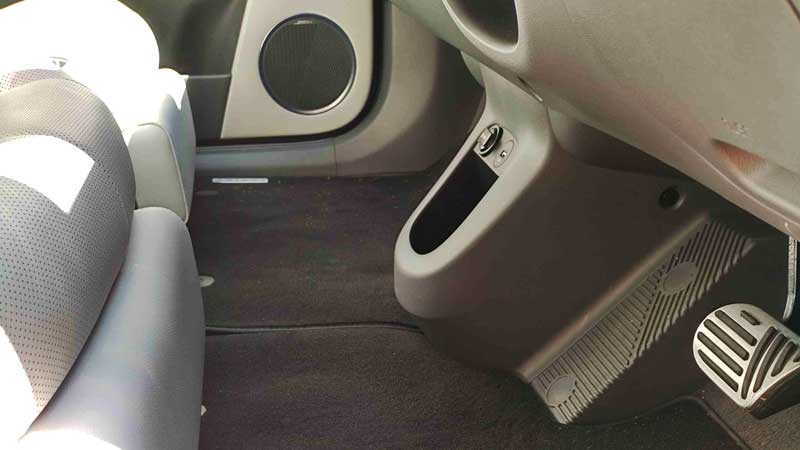
The Kona Electric has also been called out on a back seat that doesn’t cater well for long-legged people. The Ioniq 5 however delivers in spades for rear passenger room.
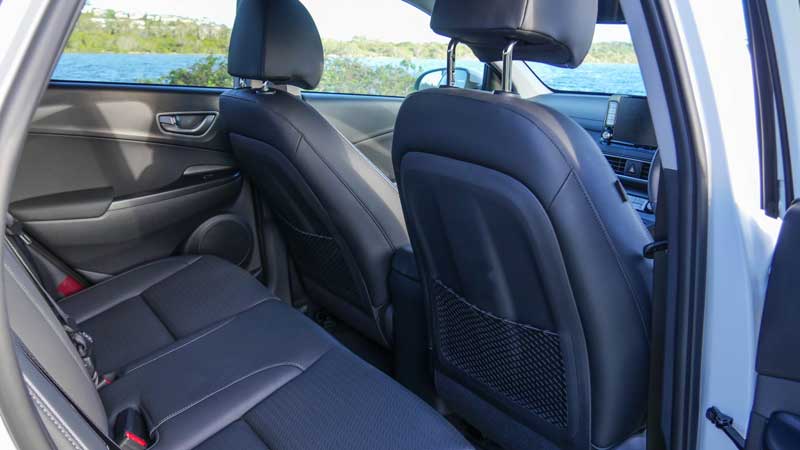
This is done through more cabin space in general, using thinner front seat backs to gain even more rear passenger legroom, plus it has sliding rear seats and a sliding front console that can be moved forward to allow even more rear seat leg room. Together, these changes effectively make the Ioniq 5 suitable for carrying the local basketball team’s members in comfort!
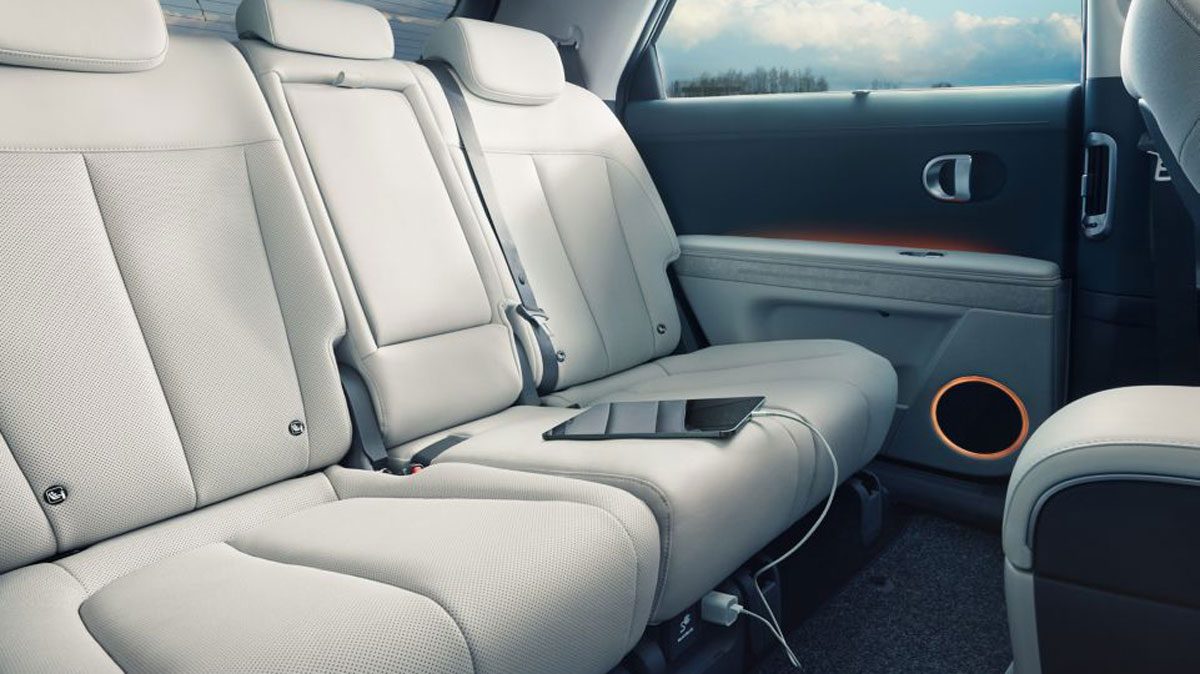
All this is done as if by magic, as the Ioniq 5 is only 420mm longer and 90mm wider than the Kona electric – all thanks to being built on that electric-only platform. Less room is lost to allowing for unnecessary engine bay space etcetera.
By the way, this Tardis-like effect (bigger on the inside than the outside) will soon feed through to other EV models as more and more are now being built on dedicated EV-only platforms.
The Ioniq 5 is also an evolution of the EV tech in the Kona. The main improvements being:
- Optional full i-Pedal driving (where lifting your foot off the accelerator brings the car to a full stop – meaning if you turn the option on, you will only ever use the brake pedal for hard stopping situations);
- V2L (Vehicle to Load) functionality for drawing up to 15A at 240V to power such things as normal household appliances and tools. (For more on V2L, see article here);
- 3 phase charging at 11kW in addition to the normal 7.4kW;
- Much faster DC charging – allowing an 80% charge in around 18 minutes (or 100km charged in 5 minutes) when connected to the fastest chargers.
In addition, the Ioniq 5 offers an additional suite of luxury features, including:
- Auto/self-parking function (parallel and perpendicular);
- Flush fitting, auto touch door handles;
- ‘Relaxion’ front seats that fold down like a recliner chair;
- Power tailgate with hands-free opening option;
- Full (non-opening) glass roof;
- Rear seat heaters;
- Blind-spot camera view on the dash when indicating left or right.
| Feature | Ioniq 5 | Kona electric |
| Length (mm) | 4635 | 4205 |
| Width (mirrors folded/mirrors out) (mm) | 1890/2152 | 1800/2070 |
| Boot volume – Seats up (litres)
– Seats down (litres) |
531
1591 |
332
1114 |
| Front boot volume (litres) | 57 (2WD); 24 (AWD) | – |
| V2L | Yes | No |
| Range (WLTP) | 451 km (2WD) | 449 km (Long range) |
| AC charge rate – 1 phase
– 3 phase |
7.4 kW
11 kW |
7.4kW
– |
| Maximum DC charge rate (km charged/hour) | 220kW (1300km) | 77kW (470km) |
| Minimum 100km charged time (under 80%) | 5 min | 13 min |
| Towing capacity in kg (braked/not braked) | 1600/750 | Not recommended |
| i-Pedal | Yes | No |
| kWh/100km efficiency | 17.6 (2WD); 19 (AWD) | 13.1 (long range) |
Summing up
If you’re after better legroom for adult rear seat passengers and/or more boot space, a good tow rating, and/or do regular intercity commutes with more than occasional use of DC fast-chargers – then the Ioniq 5 is a significant step-up from the Kona electric.
If the Ioniq 5’s more luxurious features and bonus of V2L appeal – then the scales tip even further towards making the change. All-up, the Ioniq 5 would be an ideal EV for a family with full-size teenagers who love to do camping trips away towing a boat or caravan.
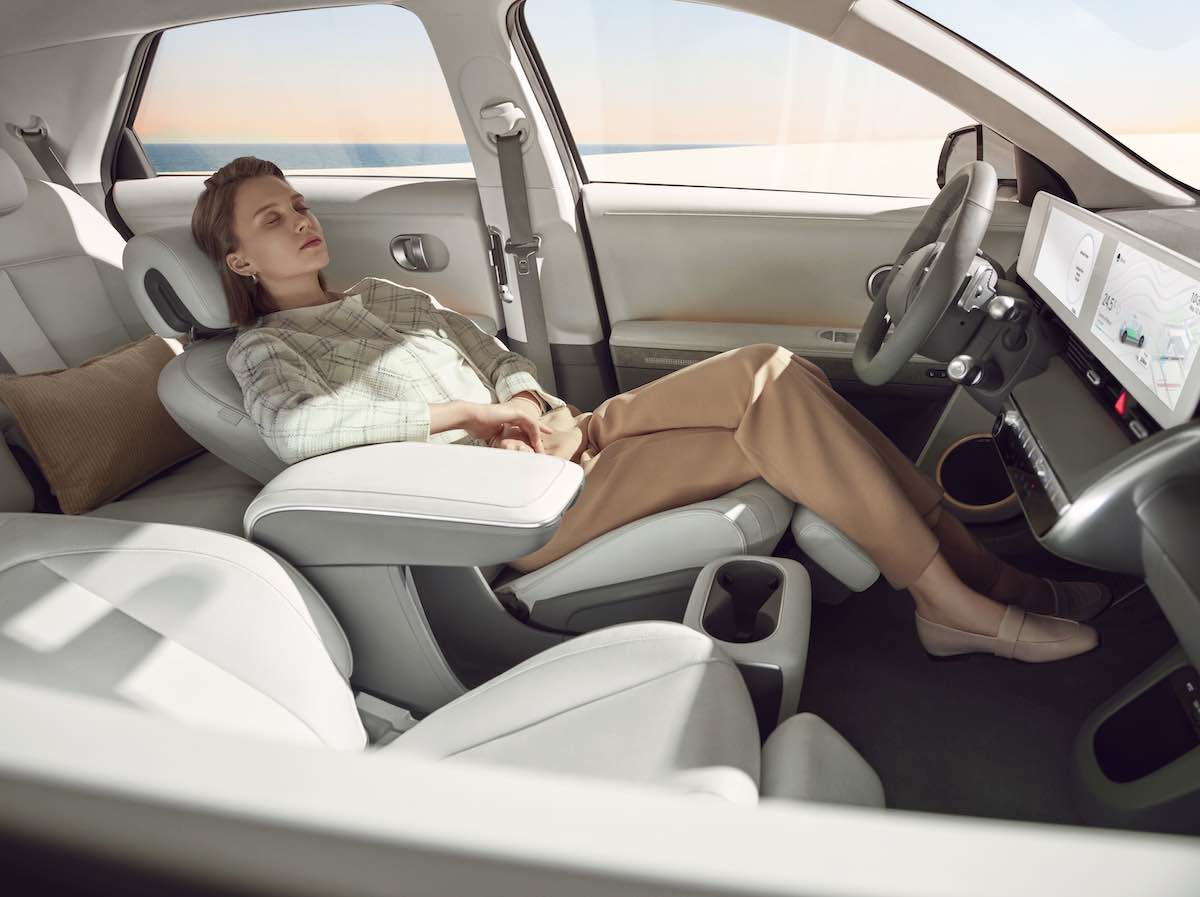
(By the way – don’t forget to invite our EV skeptic PM to your campsite for a snag cooked on your electric BBQ beside the camp trailer you towed there with your EV!).
On the other hand, if the Kona electric already offers you all the space you need, only occasionally carry passengers and actually appreciate stopping for a 20 – 30 minute DC fast-charge break every two to three hours on a really long trip, then keep the Kona.
It is the more energy efficient of the two and, as owners of them will attest, a very easy car to live with as a full replacement to an ICE one.
Oh – and if you’re wondering: impressed as I was by the Ioniq 5, I will be keeping my Kona for a while yet. It still works perfectly for all my uses.

Bryce Gaton is an expert on electric vehicles and contributor for The Driven and Renew Economy. He has been working in the EV sector since 2008 and is currently working as EV electrical safety trainer/supervisor for the University of Melbourne. He also provides support for the EV Transition to business, government and the public through his EV Transition consultancy EVchoice.


